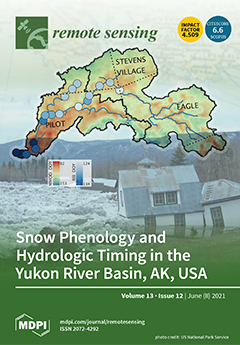Precise modeling of weighted mean temperature (
) is critical for realizing real-time conversion from zenith wet delay (ZWD) to precipitation water vapor (PWV) in Global Navigation Satellite System (GNSS) meteorology applications. The empirical
models developed by neural network
[...] Read more.
Precise modeling of weighted mean temperature (
) is critical for realizing real-time conversion from zenith wet delay (ZWD) to precipitation water vapor (PWV) in Global Navigation Satellite System (GNSS) meteorology applications. The empirical
models developed by neural network techniques have been proved to have better performances on the global scale; they also have fewer model parameters and are thus easy to operate. This paper aims to further deepen the research of
modeling with the neural network, and expand the application scope of
models and provide global users with more solutions for the real-time acquisition of
. An enhanced neural network
model (ENNTm) has been developed with the radiosonde data distributed globally. Compared with other empirical models, the ENNTm has some advanced features in both model design and model performance, Firstly, the data for modeling cover the whole troposphere rather than just near the Earth’s surface; secondly, the ensemble learning was employed to weaken the impact of sample disturbance on model performance and elaborate data preprocessing, including up-sampling and down-sampling, which was adopted to achieve better model performance on the global scale; furthermore, the ENNTm was designed to meet the requirements of three different application conditions by providing three sets of model parameters, i.e.,
estimating without measured meteorological elements,
estimating with only measured temperature and
estimating with both measured temperature and water vapor pressure. The validation work is carried out by using the radiosonde data of global distribution, and results show that the ENNTm has better performance compared with other competing models from different perspectives under the same application conditions, the proposed model expanded the application scope of
estimation and provided the global users with more choices in the applications of real-time GNSS-PWV retrival.
Full article





